- 36 Posts
- 678 Comments
You’re arguing semantics and that’s not the point I’m trying to argue here. Forget the term “Plasma”. I don’t really care about what the DE is branded as or what’s in “Plasma” the software package. When I say “KDE”, I mean the desktop + all the basic default/recommended apps that you’d see on a typical KDE installation, such as Dolphin, Konsole, Kate, Kalculator, Spectacle etc that’s part of the KDE project. IDK whether the apps I’ve mentioned are considered part of “Plasma” or not, but again, that’s not the point, I’m saying this is what I meant when I said “KDE” - and what most people would expect when they picture a “KDE” environment.
Anyways, I tested this myself on two identical VMs with 2GB RAM, one installed with Fedora 40 KDE, and another with Fedora 40 LXQt, both set to use X11 (because LXQt isn’t Wayland ready yet), both updated and running the latest kernel 6.8.10-300.fc40. I logged into the DEs, opened only two terminal windows and nothing else, ran, and ran
htop. The screenshot speaks for itself: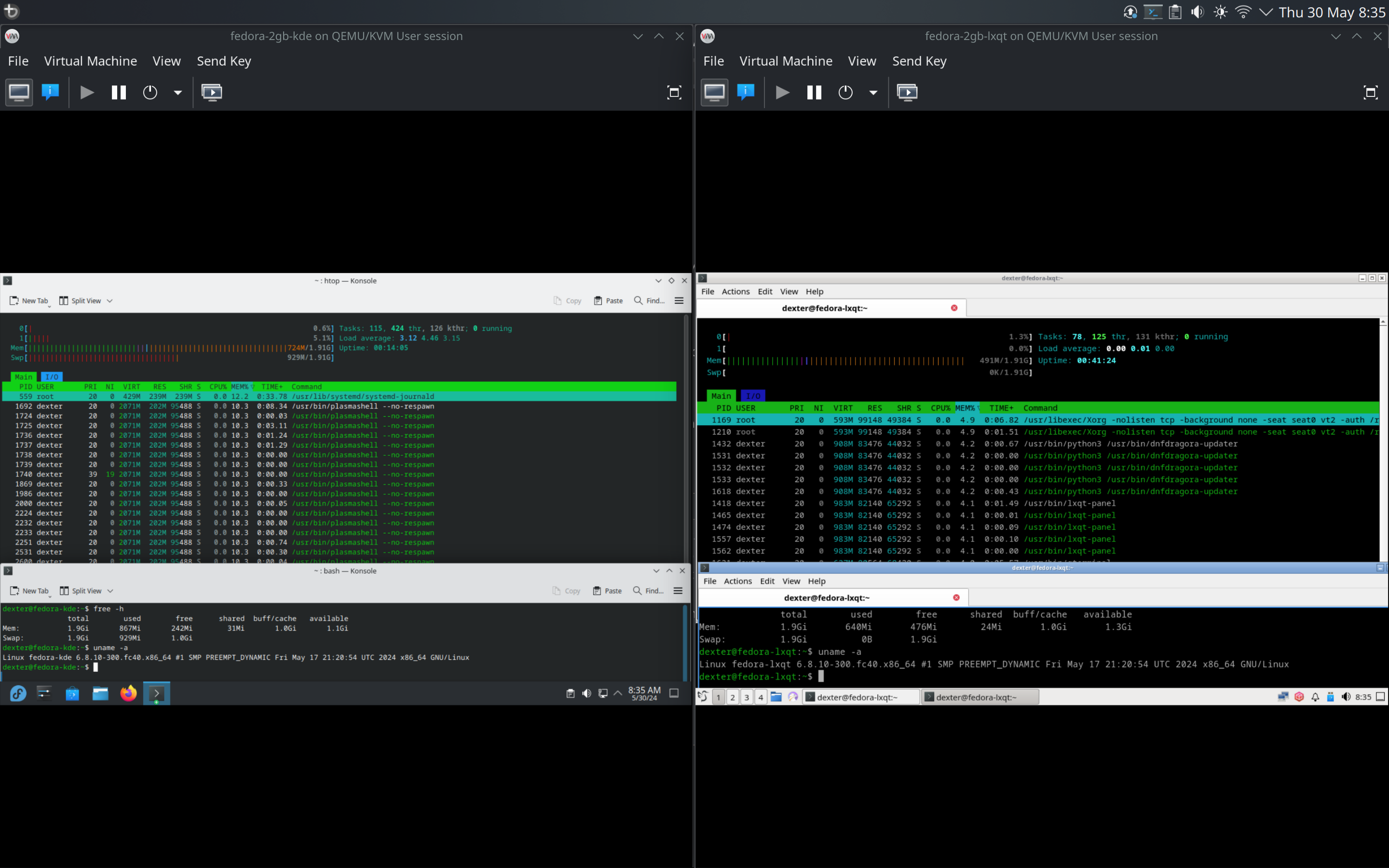
And when I tried disabling swap on both machines, the KDE machine was practically unusable, with only 53MB RAM remaining before it completely froze on me. Meanwhile, the LXQt one was still very much usable even without swap enabled.
I’d like to see you try running without swap and see how it fares. And if you think it’s unfair disabling swap on a 2GB machine - try installing LXQt yourself, disable swap and see for yourself how much more usable it is compared to KDE.
And this is why I say KDE is bloated and not suitable for old machines.
Edit: Also, check out the memory consumption listed by a user in this post: https://lemmy.nz/comment/9070317
Edit2: Here’s a screenshot of the top 30 processes on my test systems, side-by-side:
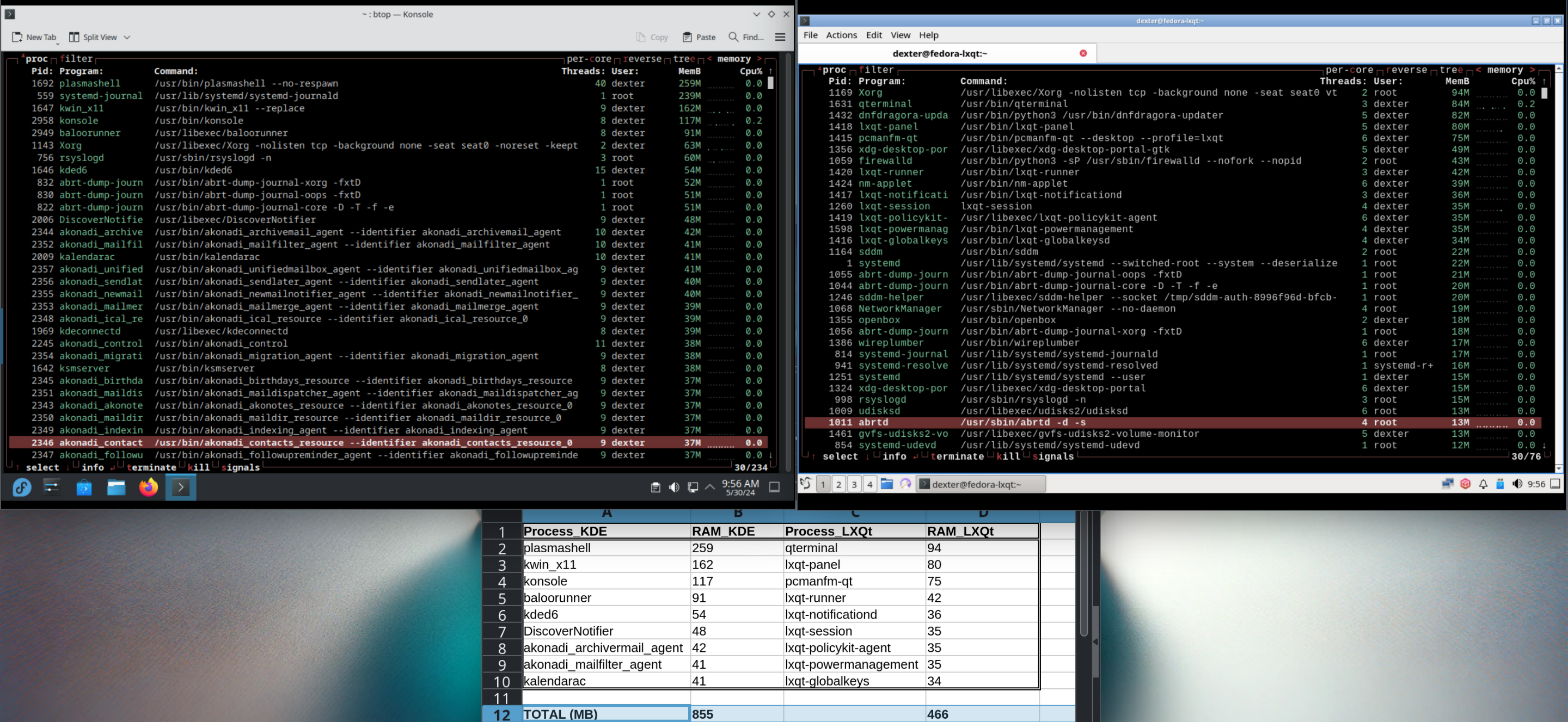
Of the above, I calculated the usage of the top 10 processes specific to each respective DE, and you can see that KDE’s memory usage is almost double that of LXQt. Had I counted all the DE-specific processes, it’d no doubt be a lot more than double.
Correct me if I’m wrong, but this #OptGreen project isn’t talking specifically about Plasma, is it? They don’t mention Plasma anywhere on the page they linked.
In any case, that’s irrelevant, also, I don’t doubt that KDE can’t run at all under the specs you mentioned - that’s not the issue. The question is, how much free/usable RAM do you actually have on that machine - let’s say with no apps open first, and with then check again with Konsole + Dolphin + KWrite/Kate open? And for fun, fire up Konqueror as well and check again.
Edit: Screenshots proving that what you’re saying is not correct:


I’m not talking specifically about Plasma, I’m talking about the “DE” part of KDE in general; and particularly in this context of repurposing and extending the life of old PCs.
I find it a bit ironic for KDE to be pushing this message, when it’s a heavy DE (relatively speaking) - it’s NOT what anyone would have in mind when when selecting a DE for an old PC.
For instance, take LXQt - run the default/recommended file browser, terminal and text editor, and compare it with KDE + equivalents - you’d see a significant difference in resource consumption. On a system with low RAM, that extra bit of free memory makes a big difference, as it could mean avoiding the penalty hit of the swap file, which you’d invariably run into as soon as you fire up a modern Web browser. So it’s vital that the DE use as little resources as possible on such a machine.
So, are there any plans to reduce the bloat in KDE, maybe even make a lightweight version (like LXQt) that’s suitable for older PCs with limited resources?

 6·29 days ago
6·29 days agoSounds like an issue with your WiFi adapter/driver. You can verify this by creating a mobile hotspot on your phone and connecting your PC to it and see if you get the same issue, if you do then it proves it’s got nothing to do with your router.
Another thing you can check is your journalctl logs - run
journalctl -fbefore launching the game, then run the game and quit it when you run into the DNS issue, and check the logs at the time the issue occurred. If there’s indeed a hardware/driver issue, the errors should show up in the logs.If it’s a driver issue, there may not be much you can do about it besides reporting the bug and implementing some sort of workaround (eg using a VPN). Of course, depending on the error, there may be a fix you can apply, like turning of aspm for your chip. A better option would be to replace the WiFi chip/adapter you’re using and get something that’s better supported under Linux, like something with an Intel or Atheros chip. But check journalctl first and see how it goes from there.

 52·1 month ago
52·1 month agoIn the footnotes they mention GPT-3.5. Their argument for not testing 4 was because it was paid, and so most users would be using 3.5 - which is already factually incorrect now because the new GPT-4o (which they don’t even mention) is now free. Finally, they didn’t mention GPT-4 Turbo either, which is even better at coding compared to 4.
You’ll need to bind a hotkey to a third-party tool such as ydotool.
Eg using ydotool, the command would be
ydotool click 0xC1

 11·1 month ago
11·1 month agoYou cannot go back after trying it
I did! Used to have a Samsung 49" ultrawide. After using it for a couple of years, I sold it and got a 16:10 32" QHD, which I found worked better for me (+ one or two laptop screens for chat / random stuff when I’m doing serious work).
The biggest issue I had with the ultrawide is that most of the games that I played weren’t optimised for it, especially in some games where things like the mini-map might be at the far end of the screen, or worse, if it was an older game then you’d have to put up with black bars, or play the game in windowed mode.

 8·1 month ago
8·1 month agoYou can already run Linux apps using Termux and Termux-X11, and I’d say the performance would be better than this demo, because this is running in a virtual machine and uses it’s own kernel, whereas with Termux you’re running your apps directly on top of the Android Linux kernel. Also, you don’t have the overhead of running ChromeOS on top of Android.
I don’t play D4 anymore so I can’t say if this still works, but back when I did, I used to launch it (ie the Battle.net launcher) from Steam, as a non-Steam game.
I also used the latest Proton-GE as the compatibility tool, so that’s something you could try as well.

 9·2 months ago
9·2 months agoIMO you shouldn’t look at it as “should I become an x user”, because that sort of implies you’re getting married to that distro. Instead, you should be asking, “should I use x to solve y?” For instance, I use RHEL, Debian (Raspbian), Fedora (Asahi), Fedora Atomic (Bazzite) and Arch. I also use Windows, macOS and FreeDOS. All solve different needs and problems. There’s no rule saying you should only stick to one distro/OS use whatever suits your needs, hardware and environment the best. :)

 322·2 months ago
322·2 months agoBecause MIUI deviates from stock Android so much that it often causes unexpected behaviour and bugs. So it’s easier for developers to just say they don’t support it, instead of putting up with negative reviews and complaints.

 2·2 months ago
2·2 months agoThis is a general tech community, mostly centered around news and end-user technology discussions, so it’s very unlikely you’ll get an answer here. Might want to try asking on Reddit or some dedicated Datto/Connectwise forum.
Well I haven’t used Plasma Mobile or any of the apps you’ve mentioned, so it’d be nice to see what it all looks like! (and I don’t have a device I can try it on either, unless I can get it working with Termux + Termux-X11?)
Nice writeup, but it would’ve been nice if you added some screenshots or a short video of your setup!
Kiwi here, no such issues with my Sync. Is there a particular community where you see these errors mainly (if so, can you link it here)?
Also, when you get those errors, it might be worth accessing that community directly using a local account - and if the images load fine, that would point to a federation issue with your server.

 4·2 months ago
4·2 months agoSamsung midrangers like the A15 / M15 / A25 etc have both the jack as well as an sdcard slot. There’s also the Motorola G34 and the G84. And finally, there’s also a flagship - the ASUS ROG Phone 8 Pro. And a whole bunch of Chinese phones which I won’t bother mentioning.

 1·2 months ago
1·2 months agodeleted by creator


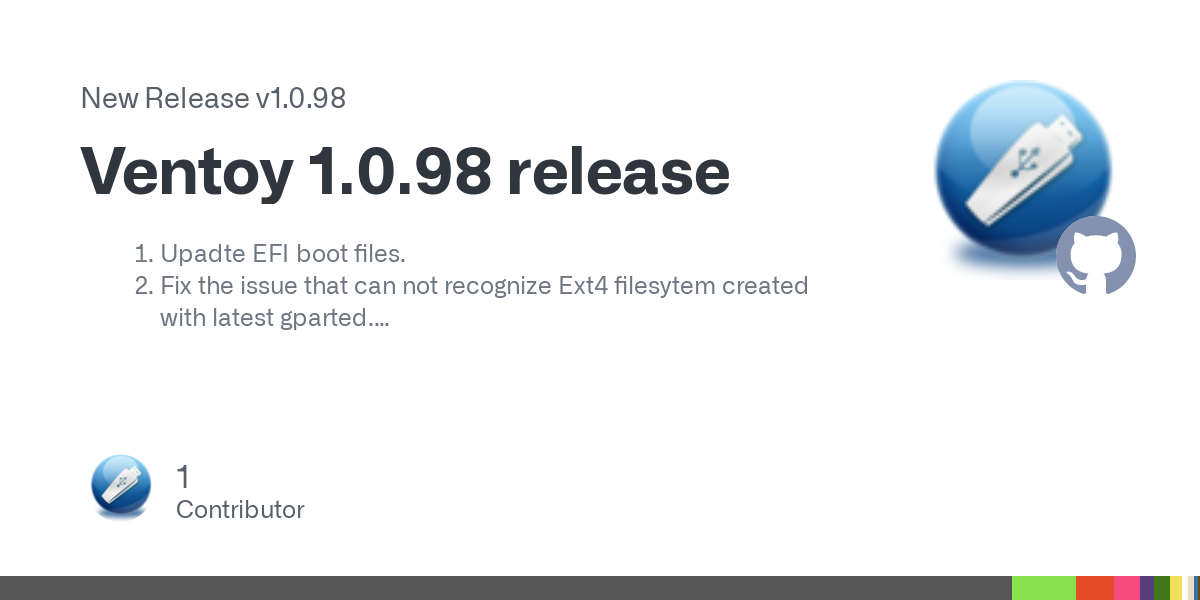







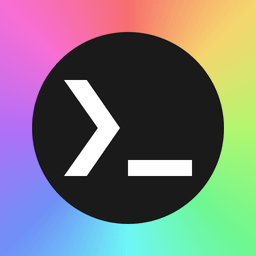



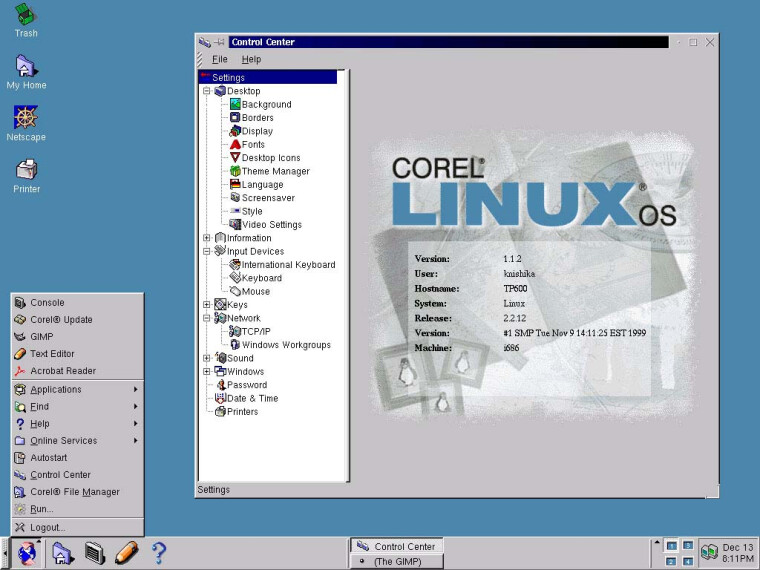









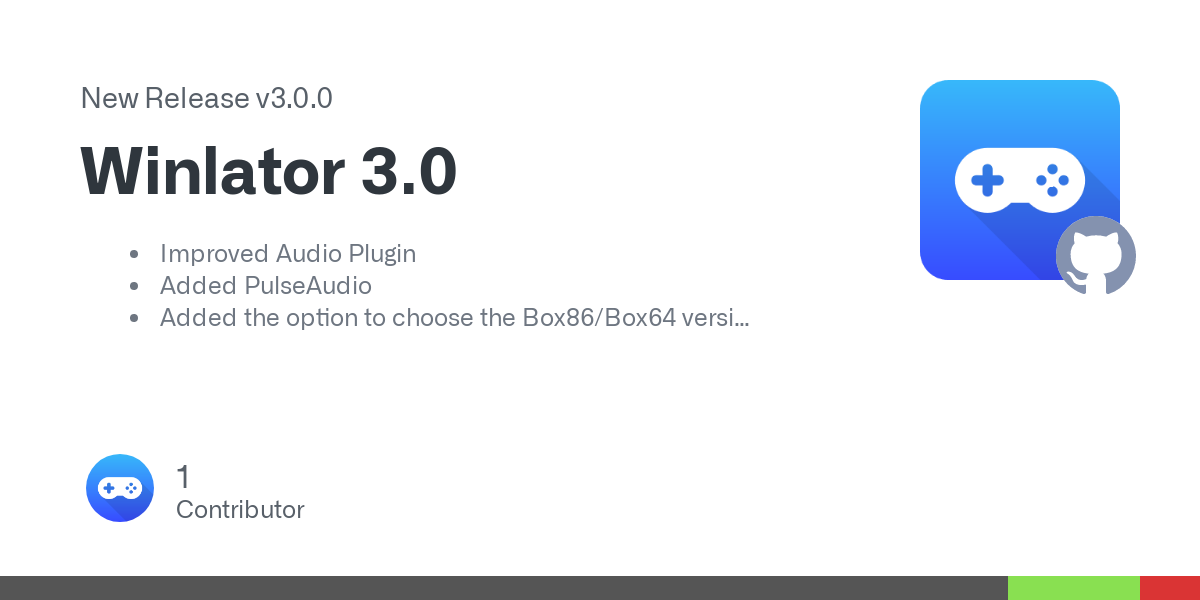
I’m not moving any goalposts. You’re the one arguing about the semantics around “Plasma”, and I keep saying that’s irrelevant.
Refer back to my original comment which was, and I quote:
To clarify, here I was:
The ENTIRE point of my argument was the KDE isn’t really ideal RELATIVELY, for older PCs with limited resources, and I’m using LXQt here are a reference.
In a subsequent test, here’s a direct apples-to-apples(ish) component comparison:
plasmashellwas sitting at 250MB btw in this instance btw.The numbers speak for themselves - no one in their right minds would consider KDE (or
plasmashell, since you want to be pedantic) to be “light”, in RELATION to an older PC with limited resources - which btw, was the premise of my entire argument. Of course KDE orplasmashellmight be considered “light” on a modern system, but not an old PC with 2GB RAM. Whether something is considered light or bloated is always relative, and in this instance, it’s obvious to anyone that KDE/plasmashellisn’t “light”.